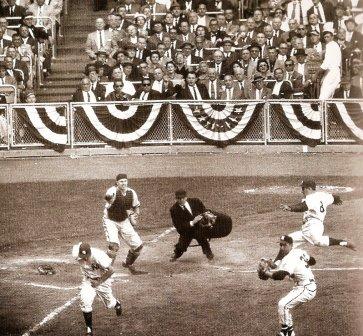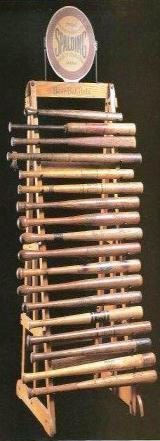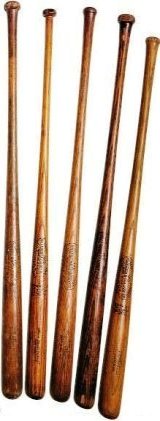last inning down 1 with runners on 2nd and 3rd with no outs...Should you bunt?

Squeeze bunt, 1957 World Series
Anonymous asked: Last inning down 1 with runners on 2nd and 3rd with no outs...Should you bunt?
Rick answered: Thank you for your question.
There are a lot of factors to consider in the scenario you described, as well as multiple options to get the job done.
Defensive plays are 5 times harder to execute than offensive plays. The defense is in a much higher pressure situation than the offense is in.
The offense knows what it is going to do and just needs to execute. The defense has to consider all the available possibilities, then react to what they start to see happening.
1. Is it the top or bottom of last inning?
2. How hard have runs been to come by?
3. Are you at the top, middle or bottom of your line up?
If you are home and have your best hitters coming to the plate, you are just a fly ball and a base hit away from winning the game, or just one hit, with 3 hitters to accomplish the task.
Since you are second and third, chances of the defense coming up with a double play are minimal.
If you are at the bottom of your lineup, maybe you want to consider one of three squeeze bunts, safety squeeze, suicide squeeze or a double squeeze bunt.
With the double squeeze in this situation, the infield will be on the grass, in front of your runner at 2B. That runner is able to get a long, running lead as there is no one to hold him on. Makes it all the easier to get the turn at third and head for home.
When you win a game in this manner, it is truly devastating to the other team. It will stay in their head, word will get around that you are willing to "take a chance", and they will all play cautiously when they play you.
It is not "taking a chance" if you have worked on the play in practice, as a part of your offense, willing to use it when needed. It is an offensive weapon, just like any hit.
With runners on second and third, no outs, the defense will be in on the grass. This generally will add about .150 points to the hitter's average, thus a .200 hitter may be as effective as a .350 hitter.
When the Diamondbacks won the World Series over the Yankees in 2001, Luis Gonzalez was jammed on a pitch by Mariano Rivera and got just enough on a Texas League Pop Up to have it land softly on the outfield grass, as Jay Bell scored from 3B, game and series over.
The Yankees had gotten into a situation where they had to play their infield up. With them back, Jeter would have caught the ball with little effort, no run would have scored.
The result may have been different, we'll never know, as it all ended on that Texas Leaguer.
What a coach decides to do in these types of situations will usually be based on their individual philosophy of the "game" itself.
There certainly is no right, or wrong answer. The choices you make day to day can, and likely will, not always be the same. Baseball is an ever changing liquid. Be prepared and flexible so you and your players are able to "go with the flow," and take advantage of what the defense is giving you at the time.
Creating an offense that forces defenses to defend 3 foot in front of home plate to the backside of the outfield fence, and everything in between, creates multiple opportunities for defensive meltdowns.
Yours in baseball,
Rick
Click here to post comments
Join in and write your own page! It's easy to do. How? Simply click here to return to Ask The Baseball Coach.
|





